Dating
The construction of this church dates back to 1710, as can also be read in the inscription engraved on the facade and placed in an oval placed at the base of the wide frame, carved in stone, with the niche of Our Lady of Sorrowful: CRUCIFIXI UNIGENITI ET DOLORUM MATRI ORATORIUM HOC DEVOTIONIS ERE HOURS WORKS ET LABORE AT DEI PARE SOLAMEN AT NATI GLORIAM CIVIUM FRATRUMQUE PIETAS EREXIT YEAR DNI 1710.
Prospectus
The church's façade, in via Pietro Siciliani, presents itself as an expression of the Salento baroque, with two entrances, and a statue, in Lecce stone, of the Blessed Virgin of Our Lady of Sorrows, sculpted at the beginning of the century. XVIII, of splendid workmanship with the epigraph: ET TVAM IPSIVS ANIMAM PERTRANSIBIT GLADIVS, placed at the center of the very pure line of the façade.
Indoor
The interior surprises with the magnificence of the ceiling, coffered, with gilded stuccos, built in 1756 perhaps by the master Agostino Chizzo of Naples and restored in 1932 by the Galatinese prof. Pietro Della Gatta, with the very rich high altar that completely covers the back wall of the church. The entire construction, carved and carved in 1716, seems to have been built with much likelihood by those same local workers who, in the space of a decade, also carried out that of the Carmine church.
On the sides of the altar, resting on plinths, there are the following eight statues, always in stone: St. Philip, St. Anthony, St. Peter, St. Catherine of Siena, St. Julian, St. Pasquale, St. Paolo and S. Chiara.
At the center of the main altar is the wooden statue of the Addolorata, polychrome, placed in a large niche at the center of the altar, a work dating back to 1716. And, with the precious golden stuccos of the altar, it seems to be a work of school Neapolitan of, as well as the remaining decoration of the church ceiling.
Between the large central niche of the Addolorata and the overlying canvas of the Crucifixion, the following epigraph: TVAM IPSIVS ANIMAM DOLORIS GLADIVS PERTRANSIVIT YEAR DNI 1716.
The mirrors
Also in the nave, distributed on the two side walls there are four large mirrors, framed and decorated in pure gold. The design of these mirrors is attributed to Pietro Cavoti. For this reason, they can date back to the mid-nineteenth century. Naturally they constitute a decorative element that recalls the nineteenth century and has a historical and artistic value. This is why their presence is permitted, even today, in the church. In fact, they replace the twenty-two mirrors that existed on the walls of the nave from the end of the eighteenth century.
The side canvases
In the lateral paintings the two 'pain streets' are represented: the 'Via Crucis' and the 'Via Matris'. The four medallions in a round frame, together with the two in an oval frame, make up the six canvases of the 'Via Matris'.
They are from 1780 and represent the following Gospel episodes: the Presentation of Jesus at the Temple, the Flight into Egypt, the Finding of Jesus among the Doctors in the Temple, the Encounter with Jesus in the ascent to Calvary, the Crucifixion, the Lamentation. The fourteen paintings of the 'Via Crucis', however, which also adorn the walls of the church as the previous ones, represent the 'stations' of the painful street of Calvario, are from the same period of the ceiling decoration and date back to 1756. In the aisle finally, obtained from the restructuring of the sacristy, there are still four other paintings: S. Andrea, a Deposition, the Assumption and a Pietà, all of good workmanship, recent gifts from Galatina families (Permit and Vallone-Caracciolo) to this church









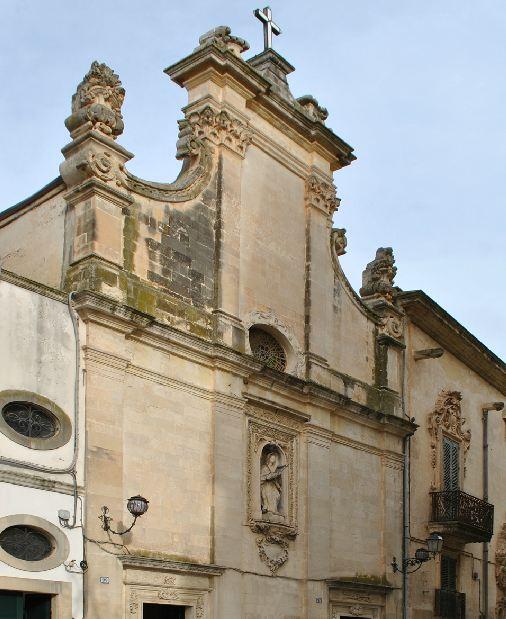
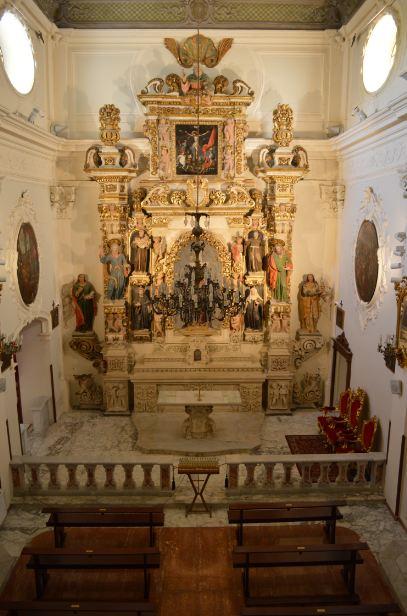
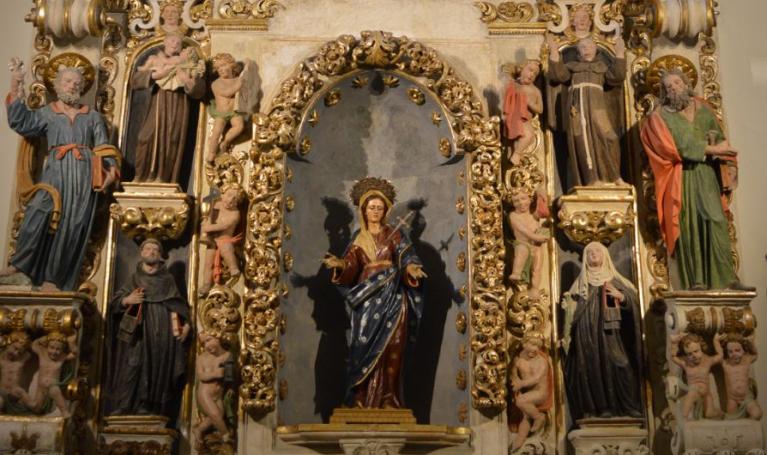
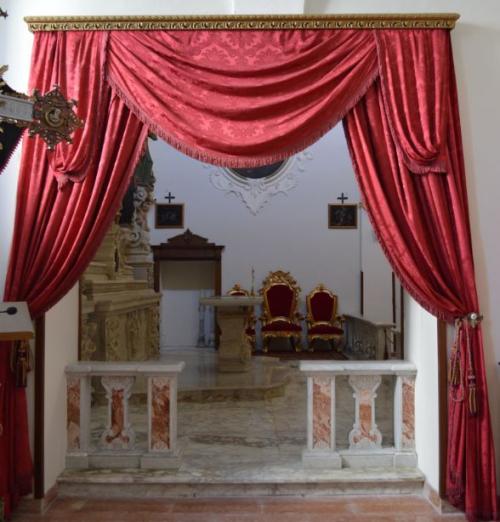
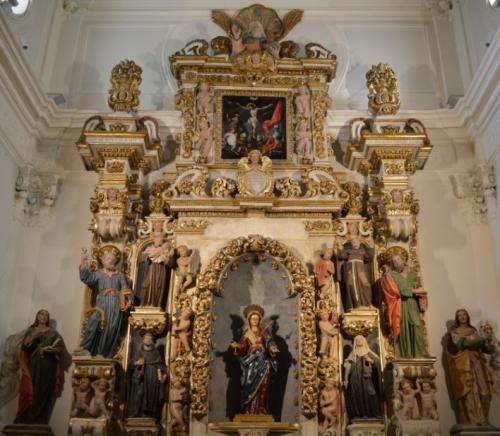
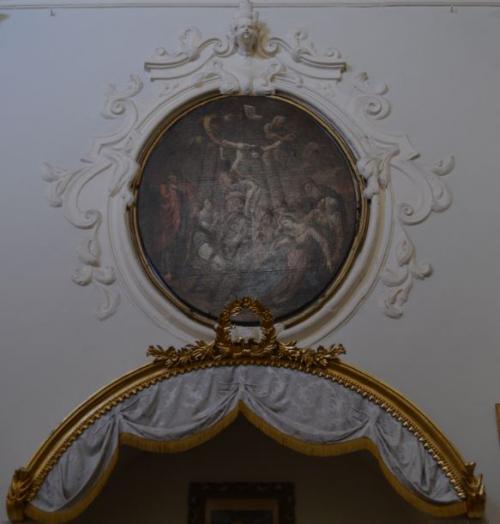
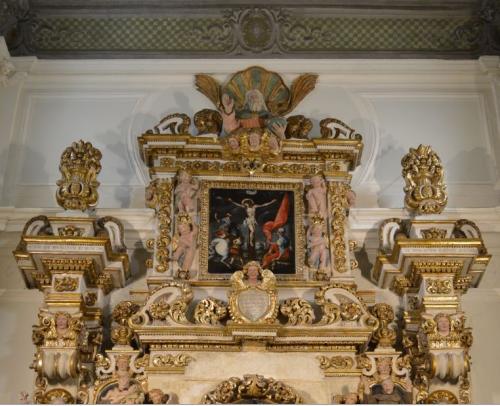
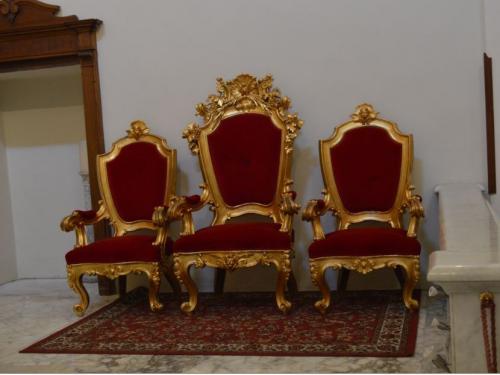
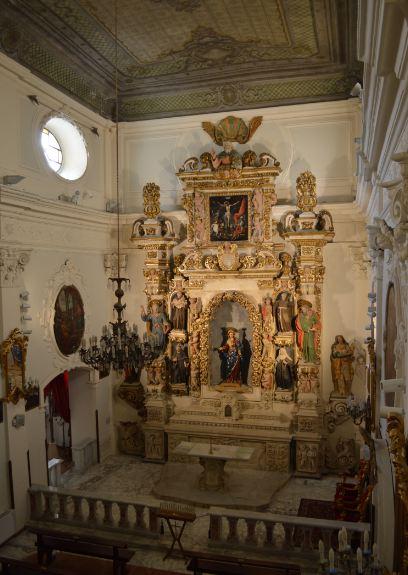



 Join VisitGalatina
Join VisitGalatina